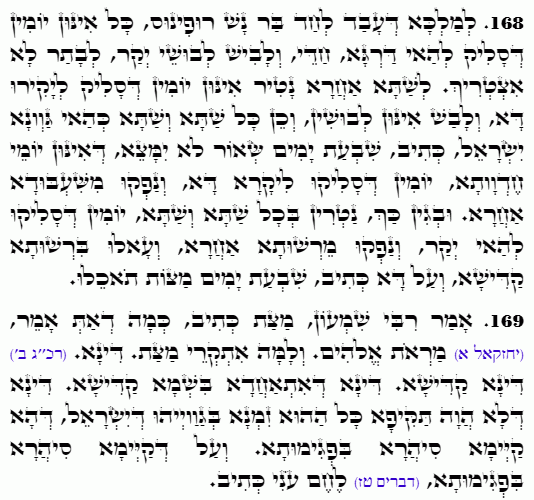Daily Zohar # 4767 – Bo – Matzah and the bread of affliction
Daily Zohar 4767

Hebrew translation:
169. אָמַר רַבִּי שִׁמְעוֹן, מַצַּת כָּתוּב, כְּמוֹ שֶׁנֶּאֱמַר מַרְאֹת אֱלֹהִים. וְלָמָּה נִקְרְאוּ מַצַּת? דִּין, דִּין קָדוֹשׁ, דִּין שֶׁנֶּאֱחָז בַּשֵּׁם הַקָדוֹשׁ, דִּין שֶׁלֹּא הָיָה קָשֶׁה כָּל אוֹתוֹ זְמַן בְּתוֹךְ יִשְׂרָאֵל, שֶׁהֲרֵי הַלְּבָנָה עוֹמֶדֶת בִּפְגָם, וְעַל שֶׁעוֹמֶדֶת הַלְּבָנָה בִּפְגִימָתָהּ כָּתוּב לֶחֶם עֹנִי.
.
Zohar Bo
Continued from previous DZ
#168
It is like a king who elevated a man to the position of minister. During all the days of his ascent to this rank, he was joyful and wore garments of honor. Afterward, he no longer needed these garments. The following year, he commemorated the days of his elevation by wearing these same garments of honor. And so, each year, he would do the same.
Similarly, with Israel, it is written: “שִׁבְעַת יָמִים שְׂאֹר לֹא יִמָּצֵא” “For seven days no leaven shall be found in your houses” (Exodus 12:19). These are days of joy, marking the time when they were elevated to this honor and freed from another servitude. Therefore, they observe these days every year, commemorating their ascent to this honor—leaving the domain of the other side and entering the domain of holiness. Thus it is written: “שִׁבְעַת יָמִים מַצּוֹת תֹּאכֵלוּ” “For seven days you shall eat unleavened bread” (Exodus 13:6).
Notes:
The observance of Passover each year reflects Israel’s annual commemoration of their spiritual ascent from slavery to freedom, honoring their transition from the domain of impurity to the sanctity of serving Hashem.
#169
Rabbi Shimon said: It is written “מַצַּת” (matzot) without the letter vav, as in the phrase “מַרְאַת אֱלֹקים” (“the visions of God”), which also lacks a vav. This indicates judgment, specifically holy judgment, a judgment associated with the holy Name. This was a judgment that did not strongly dominate Israel during that time because the moon (Nukva, Malchut) was in a flawed state. Due to the moon’s flaw, it is written: “לֶחֶם עֹנִי” (“bread of affliction”).
Explanation: Initially, the nukva was in the state of “two great luminaries,” where both the Zeir Anpin and the Nukva were of equal stature. In this state, Z” A received from the right line of Binah, while the Nukva was positioned at the left line of Binah. At this stage, they were in the state of “small faces.”
Notes:
Matza symbolizes a rectified state of holy judgment (din), connected to the state of the Nukva during its flawed state when the moon (Nukva) was diminished. Even in its rectified state, these judgments serve as the foundation for the illumination of Chokmah in the greater structure. Thus, matza represents the transformation of judgment into a source of Light and mercy.
{||}

 Previous: Bo
Previous: Bo

